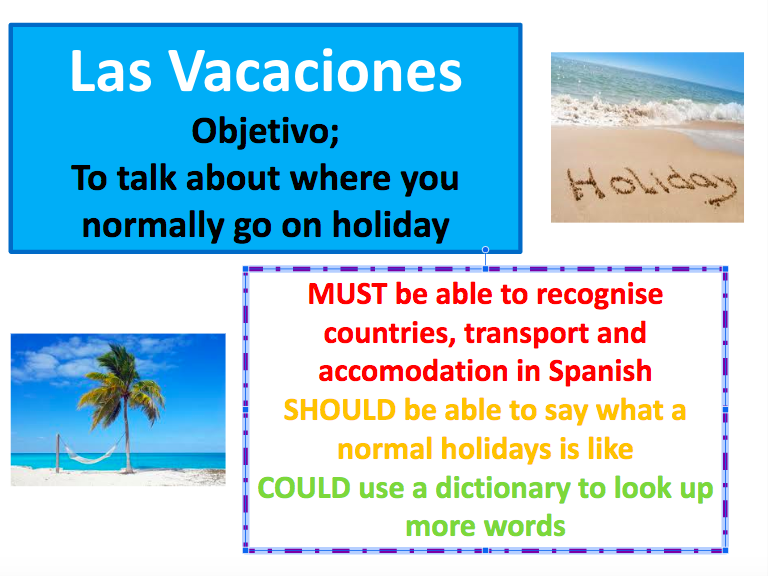Term 1- Week 4
Section outline
-

Communication, Language Knowledge and Cultural Knowledge, levels 3 and 4
At these levels, students can understand and construct simple text using their knowledge of Spanish. Students can describe aspects of their own background and immediate environment.
In selected linguistic and sociocultural contexts, students will: For example, students might: - understand and produce information and ideas;
- make comparisons between texts (noting similarities and differences);
- express and respond to personal needs and interests;
- choose the place they like best and give reasons why;
- use cultural knowledge to communicate appropriately;
- construct a similar example using information about a place in New Zealand;
- recognise and describe ways in which Spanish is organised;
- be introduced to a variety of language and sentence patterns, e.g., tambien … por eso …, bares que estan abiertos ... un parque natural donde se puede, … in the context of two- or three-clause sentences;
- compare and contrast languages;
- look at the difference between jugar, practicar, and tocar when talking about activities;
- recognise and describe ways in which Hispanic cultures are organised;
- recognise masculine and feminine articles and nouns and adjective agreements;
- compare and contrast cultural practices.
- discuss possible reasons why jogging is not a Hispanic activity and that bullfighting is not part of New Zealand culture.
